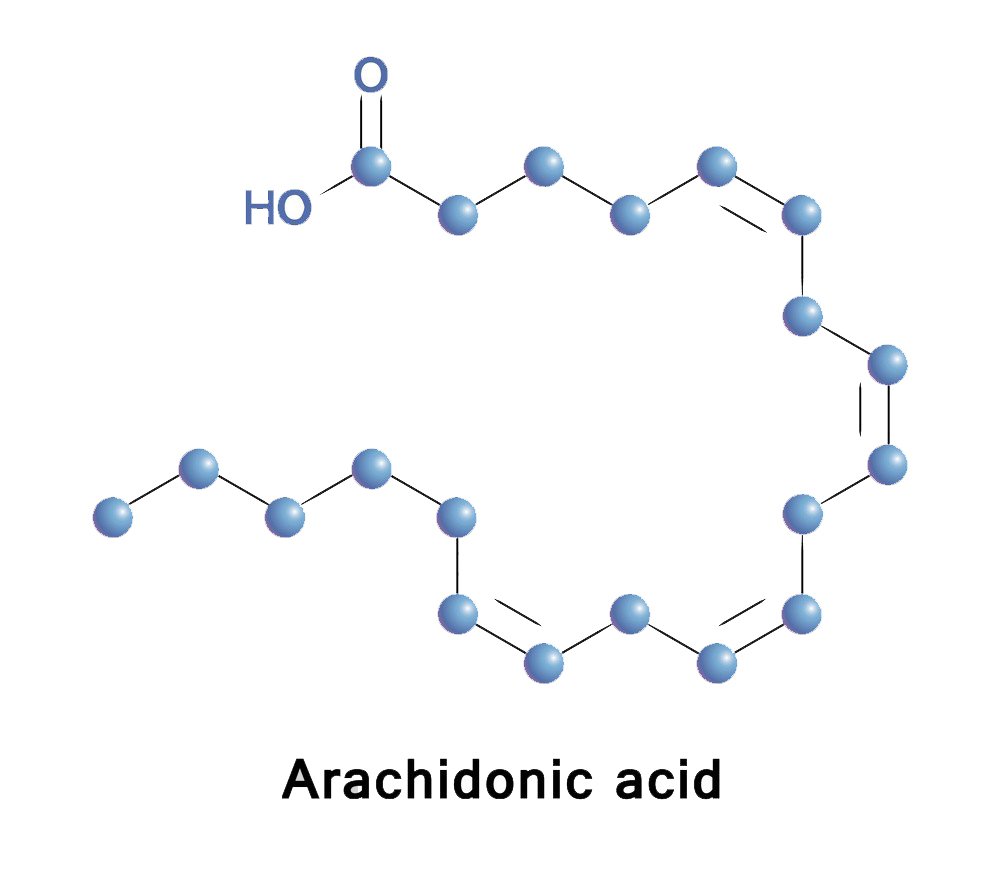Arachidonic Acid is a polyunsaturated omega-6 fatty acid, and it plays a crucial role in various physiological processes in the human body, including inflammation, blood clotting, and cell signaling. It is an essential fatty acid, meaning the body cannot synthesize it and must obtain it from the diet. Here are the common methods used for studying Arachidonic Acid:

Dietary Sources: Arachidonic Acid can be obtained from dietary sources like meat (particularly red meat and organ meats), eggs, and certain types of fish, such as mackerel, herring, and salmon. Researchers can study the impact of different diets on Arachidonic Acid levels and its effects on health.
Cell Culture Studies: In vitro cell culture studies allow researchers to investigate the cellular metabolism of Arachidonic Acid. Cells can be treated with Arachidonic Acid to observe its effects on cell behavior, inflammation, and signaling pathways.
Animal Models: Animal models (e.g., rodents) are commonly used to study the physiological effects of Arachidonic Acid in vivo. Researchers can manipulate Arachidonic Acid levels in the animals’ diets or through genetic modifications to understand its role in various biological processes.

Blood and Tissue Samples: Analysis of blood and tissue samples from human subjects or animals can provide insights into the levels of Arachidonic Acid and its metabolites in different physiological and pathological conditions.
Chromatographic Techniques: High-performance liquid chromatography (HPLC) and gas chromatography (GC) are commonly used methods for the separation and quantification of Arachidonic Acid and its metabolites from biological samples.
Mass Spectrometry: Mass spectrometry is a powerful technique used to identify and quantify Arachidonic Acid and its metabolites in complex biological samples with high sensitivity and specificity.
Isotope Tracing: Isotope-labeled Arachidonic Acid can be used to trace its metabolic fate and identify its conversion into various metabolites, such as prostaglandins and leukotrienes.

Enzyme Assays: Various enzyme assays can be employed to measure the activity of enzymes involved in the metabolism of Arachidonic Acid, such as cyclooxygenases (COX) and lipoxygenases (LOX).
Imaging Techniques: Techniques like immunohistochemistry and immunofluorescence can be utilized to visualize the localization and distribution of Arachidonic Acid and its metabolites in tissues and cells.
Genetic Studies: Genetic studies, including knockdown or knockout experiments, can help researchers understand the role of specific genes and enzymes involved in Arachidonic Acid metabolism.
These methods, among others, allow researchers to study the role of Arachidonic Acid in health and disease, explore its involvement in various biochemical pathways, and investigate potential therapeutic targets for conditions related to Arachidonic Acid metabolism.
